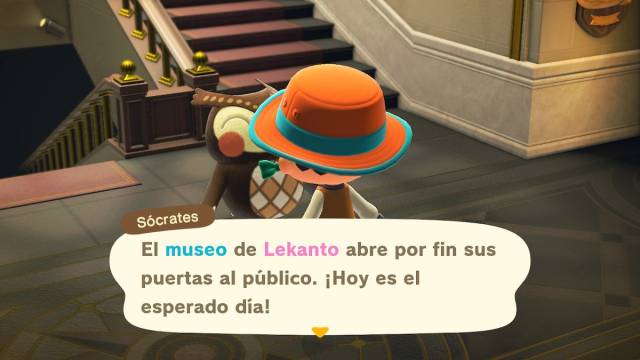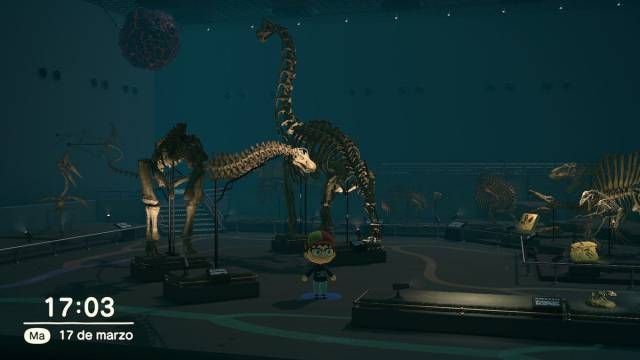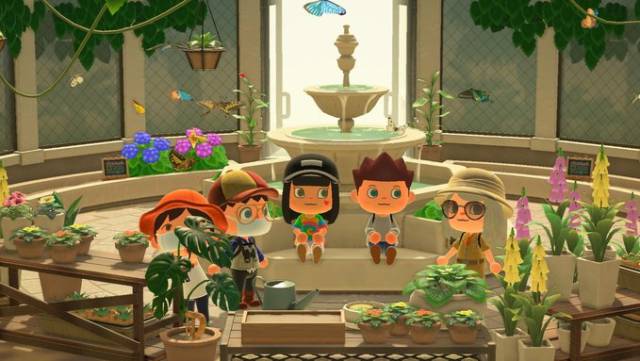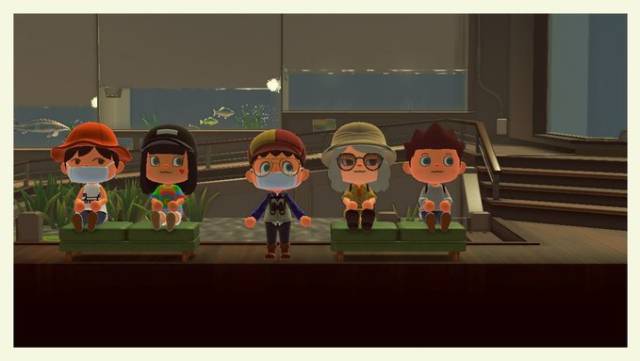
The new video game in the saga for Nintendo Switch gives greater prominence than ever to the public center for the conservation and study of nature.
With Animal Crossing: New Horizons now available worldwide and unwittingly becoming one of the top cures for coronavirus quarantine, this weekend the Nintendo Switch title has seen the beginning of the adventure in thousands of players. In our case, after several weeks with the game, we realize the importance of the Socrates Museum as a hook to continue playing, now more than ever.
The Museum had to be reinterpreted: top-down reconstruction
The Museum at Animal Crossing has always been important, of course; but his role was different. We are looking forward to talking more about the public study, preservation and conservation facility for fossils, insects and fish in Socrates. And is not for less. That is why today we dedicate this article to that enormous monument.

Apart from the Nook Miles, that second currency that prevents the day-to-day tasks from ending due to its emerging challenges, the donation of materials for the Museum now has a special incentive mainly for its design, both the conceptual like the strictly visual. The Aya Kyogoku and Hisashi Nogami team knows that many people gave up on previous iterations in this difficult task; Because completing all the rooms can take months (there are animals that only appear in certain seasons and conditions).
How to relieve the Museum of financial responsibility
A reason had to be found so that all those fossils, tarantulas and huge fish ended up being a voluntary contribution and not part of the exchange of goods with Tendo and Nendo in the sale. For this, New Horizons has had to find a parallel economic formula, that there are goods designed for those purposes without intervening in what was once part of day-to-day economic savings.

Let's take a look back: from GameCube, through Wii, Nintendo DS and 3DS, the routine revolved around hitting stones, shaking trees, digging up fossils, capturing bugs and fishing for fish in order to be used as a means to end our mortgages . They were a means and not an end. Thus, the museum – without many visual or artistic incentives – was relegated to the background: empty rooms, icons that were repeated over and over, an uncomfortable process of donating objects by having to examine each fossil one by one … It was almost uncomfortable, in the literal sense of the word.
Not now. It is not for two reasons: on the one hand, that ability to produce through DIY a multitude of objects that can be sold for high prices in the store. All the objects you collect, from wood, stones, bamboo or fruit, can be reused to design new items or amortize them in whatever is the "Objects of the Day" in the Tendo and Nendo store. A fountain? Let's collect stones and make five sources that we will later sell. And so on, without necessarily going to that pile of repeated fossils that no longer have a place in the museum.

So no one told you life was gonna be this way
Visual power: an installation that enters through the eyes
And speaking of fossils: now they can be used to decorate our town, abroad. Have you accumulated all the pieces of a Diplodocus or a Triceratops? The skeleton looks fearlessly next to the Town Hall. But not only on the outside, and we already connect with the other great incentive of the Museum of Animal Crossing: New Horizons as an element to continue playing: the interior.
Once we unlocked the Socrates Museum from the third day of departure, the installation boasts – in an artistically brilliant way – a design that realistically emulates an aquarium, an archeology room and a botanical garden. Also, Nintendo wants you to take advantage of Photo Mode constantly; that's why there are movements and inclinations in the camera that we cannot do outside. That is why there are rooms designed so that there are four or five simultaneous members, each in one of the chambers of a walkway surrounded by water and swimming fish. Delicacy and good taste.

The multiplayer mode is inevitably destined for a guided tour of the museum. We ourselves can put it as an example with the game that we have made this weekend. Five friends gathered on the same island, hunting, fishing and running together, including a museum visit and countless photos. In fact, there are those who are beginning to use the museum to play hide and seek. It is so big and with so many nooks and crannies that it is not difficult to get lost.
We cannot forget the educational and informative value of Animal Crossing. The Museum remains informative, but now takes more depth in that regard through not only Socrates' explanations but the descriptions of the plaques for each and every contribution. They are not fictitious descriptions, but what is ascribed there corresponds to the reality of archaeological studies.

For this reason, the Museum invites you to continue playing. Animal Crossing: New Horizons wants you to complete each room and make it look like a Jurassic park, it wants the empty partitions to disappear, that the fountain over which a lot of flowers surround is full of flying butterflies.
It is no longer a mere completist interest, it is no longer just the motto get hold of everyone; It is an added motivation that, with great success in design tasks and artistic incentives, makes this traditional public installation of the saga make more sense than ever.
And you, what can you donate tomorrow?
Animal Crossing: New Horizons is available exclusively for Nintendo Switch. You can read our Reviews at this link; Our guide is also ready with tips, questions answered and more.

